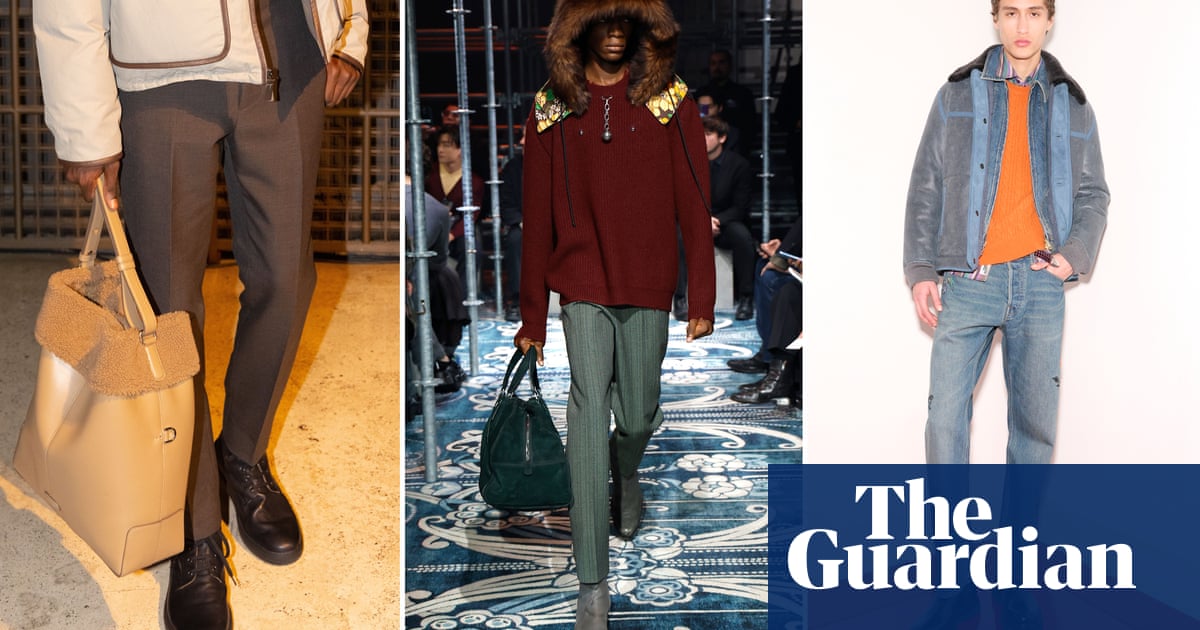As the men’s shows drew to a close this week, something looked different on the catwalk. Trousers hugged calves. Fabric that once billowed around thighs clung tight. Shoes usually hidden by hems were now visible.
After several seasons in which wide-legged trousers had expanded beyond the catwalk to men who shop at Uniqlo, Muji, Zara and M&S and beyond, was the skinny, slimline, tapered trouser staging a comeback?
For men and women, big and baggy trousers have been the dominant trend for the past few seasons. From Paul Mescal in Gucci at last year’s Oscars toCos’s autumn 2024 collection, a trouser’s girth was everything. But this year, that might change.
Sign up toFashion Statement
Style, with substance: what's really trending this week, a roundup of the best fashion journalism and your wardrobe dilemmas solved
after newsletter promotion
Like most trends, this one was consolidated on the Prada catwalk. If the previous season showed trousers with a 10in width, roughly the size of a dinner plate, this season’s clung to the calf, and were the width of a saucer. Elsewhere at Tod’s, fine wool trousers sat snugly around the knee, and at Paul Smith, the doyen of dapper tailoring, the cut was slim and ramrod straight.
When asked about the size of their trousers backstage on Sunday, Prada’s co-creative director, Raf Simons, said it was less about trends and theories and more about “what feels right”.
In some ways, this switch feels entirely predictable. A decade after he came up with the termnormcore, the trend forecaster Sean Monahan coined the equally catchy-if-nebulous term, “vibe shift”, to explain why sometimes, things change, and something cool somehow feels dated. On his prediction list this month for 2025: skinny jeans. Depop, the gen Z-loved secondhand site that often serves as an authority on trends, predicts “the new indie vanguard”, of which skinny jeans are a key part, will be “this year’s Brat Summer” (a distinctive style).
Skinny jeans first hit fashion in about 2005, shortly afterHedi Slimane’s Dior Homme collection. Considered the hard launch for the slimline look, which is often referred to as “indie sleaze”, narrow silhouettes soon flourished, epitomised by Cheap Monday jeans and Pete Doherty – regardless of wearer, gender and body type.
The cut remained central to the zeitgeist until the pandemic era, when waistbands and shapes relaxed and baggy clothes usurped formal – and physically restrictive – suits. Such was the sea change, last spring the New York Times put baggy trousers on the cover of its magazine.
Theories as to why slim-cut trousers are back abound. A sign that working from home is over? Proof we want to consign the “pandemic pant” to the past? Or is it the hem-width index in play, fashion’s response to “shrinkflation” in which companies shrink products without downsizing the prices.
Reactions are mixed. Vogue called the winter 2024 skinny look, its “most feared denim trend revival”. The good news is, it’ll be a few seasons before this trickles back on to the high street.
